engine JEEP WRANGLER 1999 Owners Manual
[x] Cancel search | Manufacturer: JEEP, Model Year: 1999, Model line: WRANGLER, Model: JEEP WRANGLER 1999Pages: 1056, PDF Size: 12.55 MB
Page 4 of 1056
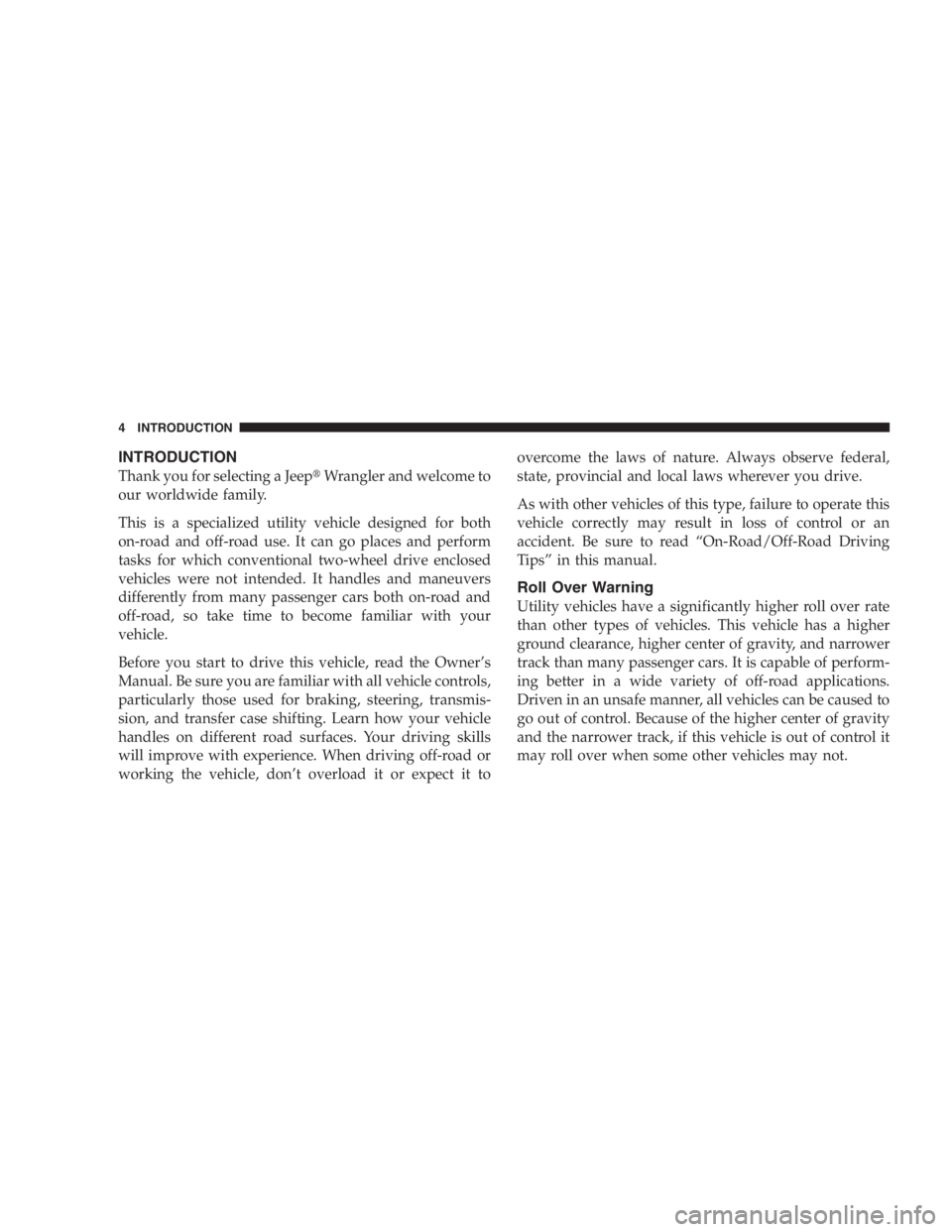
In cold weather, always turn off the wiper switch
and allow the wipers to return to the park position
before turning off the engine. If the wiper switch is
left on and the wipers freeze to the windshield,
damage to the wiper motor may occur when the
vehicle is restarted.
Page 24 of 1056
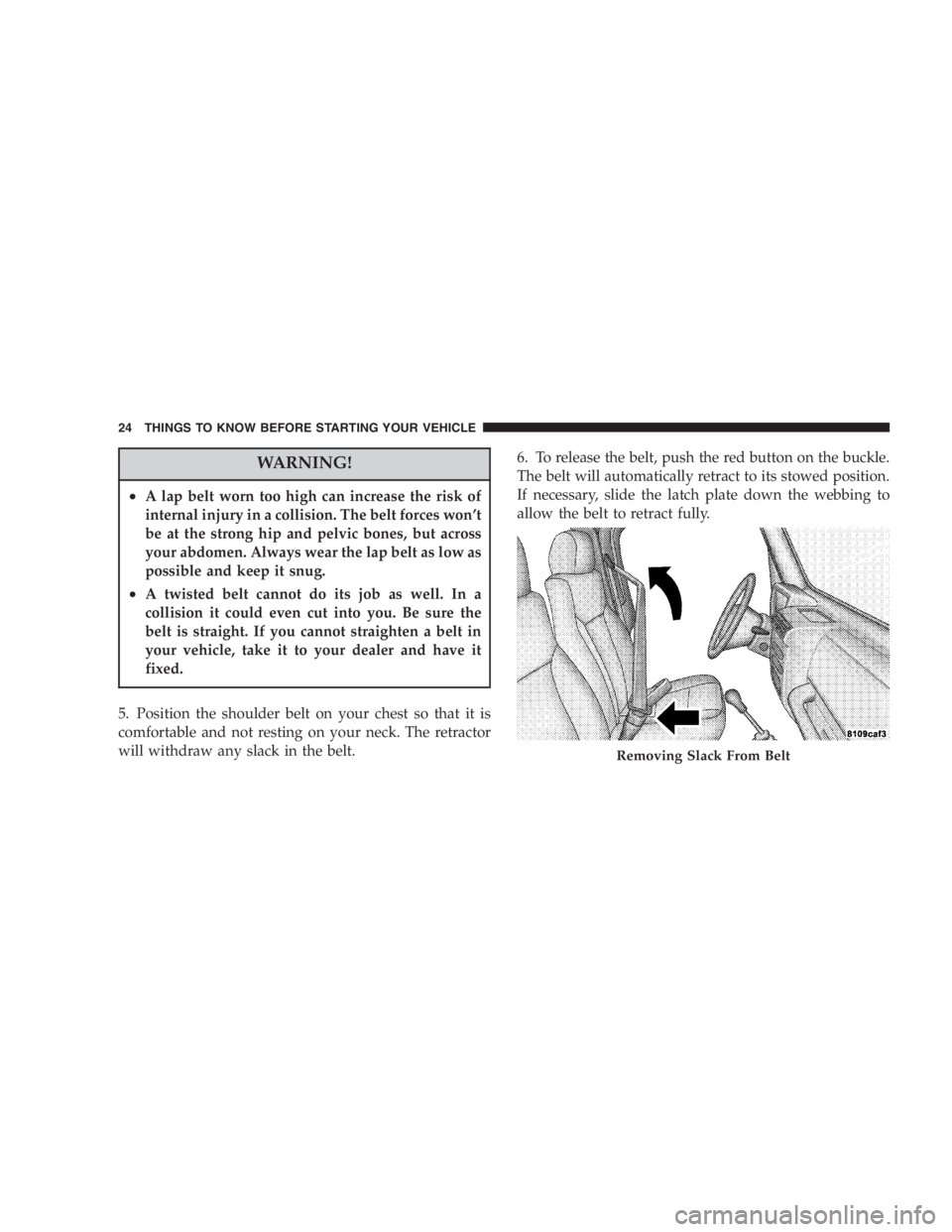
Engine exhaust, some of its constituents, and certain
vehicle components contain or emit chemicals
known to the State of California to cause cancer and
birth defects or other reproductive harm. In addition,
certain fluids contained in vehicles and certain prod-
ucts of component wear contain or emit chemicals
known to the State of California to cause cancer and
birth defects or other reproductive harm.
Page 36 of 1056
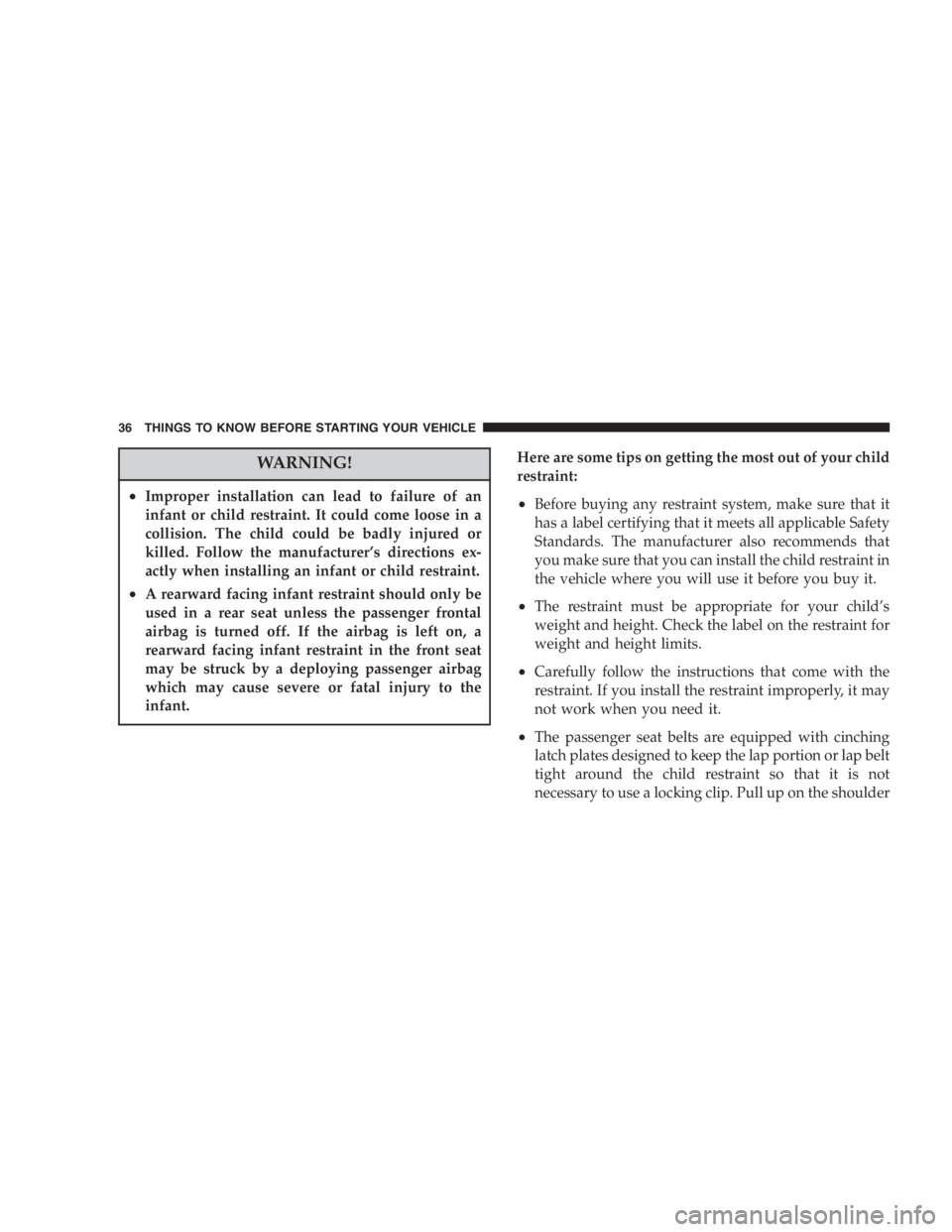
Cavity Fuse/Color Description
29 Relay ASD
30 Relay A/C Clutch
31 Relay Transmission
32 Relay Starter
33 Relay ABS
34 Open
35 Relay Fog Lamp
36 Relay Horn
37 Relay Fuel Pump
38 Relay HBL (Rear Window De-
froster)
39 Relay Front Differential Locker
(Rubicon) or High Speed
Fan (2.4L Engines)
40 Relay Rear Differential Locker
(Rubicon) or Low Speed
Fan (2.4L Engines)
MAINTAINING YOUR VEHICLE 289
Page 80 of 1056
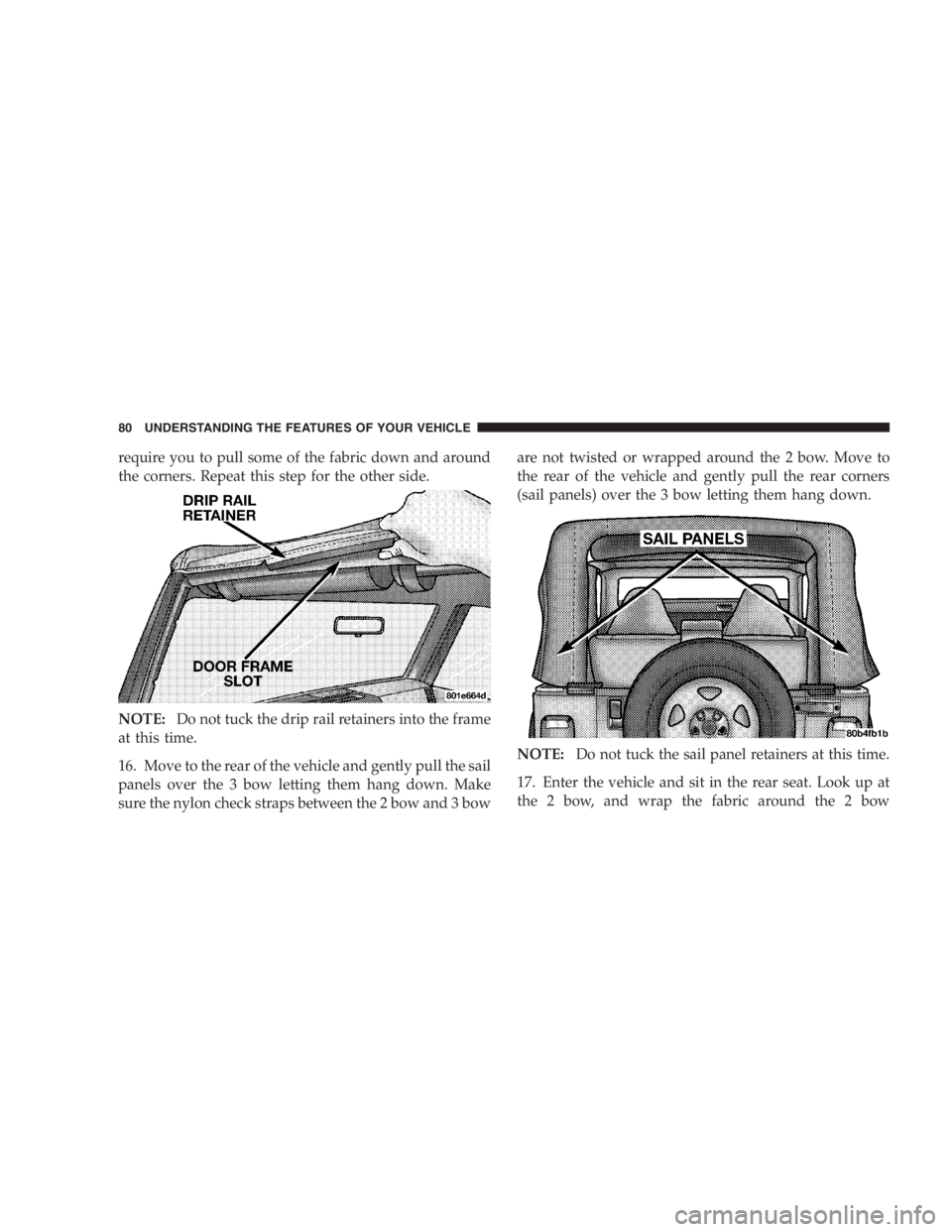
Manual Transmission Shift Speeds in MPH (KM/H)
EngineSpeeds 1 to 2 2 to 3 3 to 4 4 to 5 5 to 6
2.4L Accel. 14
(23)24
(39)34
(55)46
(74)57
(92)
Cruise 11
(18)19
(31)27
(43)38
(61)45
(72)
4.0L Accel. 15
(24)24
(39)34
(55)47
(76)56
(90)
Cruise 10
(16)19
(31)27
(43)37
(60)41
(66)
Clutch Interlocking Ignition System
Manual transmission vehicles are equipped with a clutch
interlock safety feature. With this feature engaged, you
must depress the clutch pedal to allow cranking of the
engine. To temporarily bypass this safety feature while
STARTING AND OPERATING 183
Page 82 of 1056
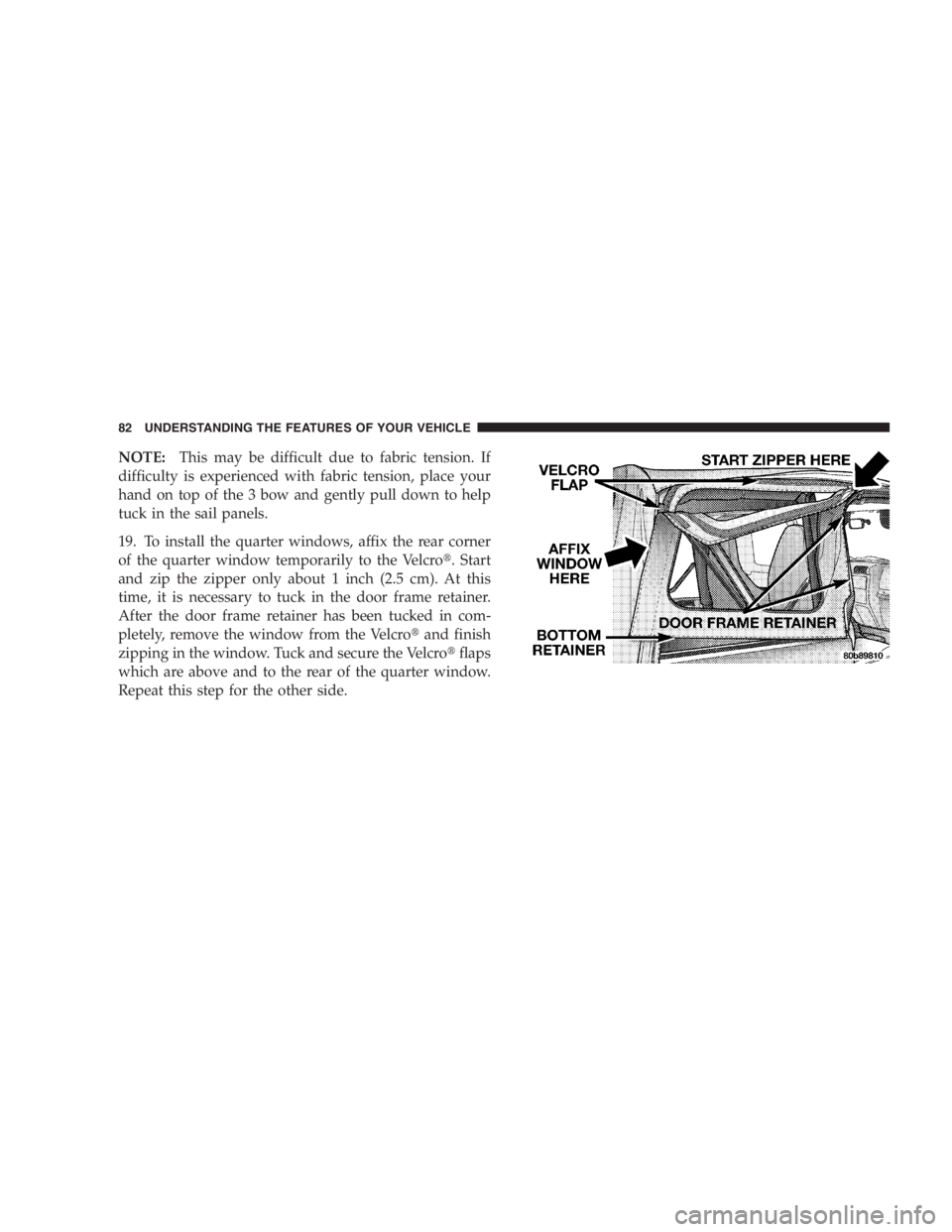
It is dangerous to shift the selector lever out of “P” or
“N” if the engine speed is higher than idle speed. If
your foot is not firmly on the brake pedal, the
vehicle could accelerate quickly forward or in re-
verse. You could lose control of the vehicle and hit
someone or something. Only shift into gear when
the engine is idling normally and when your right
foot is firmly on the brake pedal.
Brake Transmission Shift Interlock System
This vehicle is equipped with a brake transmission shift
interlock system (BTSI) that holds the gearshift lever in
the P (Park) position when the ignition switch is in the
OFF position. To move the gear selector lever out of the
P (Park) position, the ignition switch must be turned to
the ON position, the brake pedal and the button on the
front of the shifter handle must be depressed.
Gear Ranges
P (Park)
Supplements the parking brake by locking the transmis-
sion. The engine can be started in this range. Never use P
(Park) while the vehicle is in motion. Apply the parking
brake when leaving the vehicle in this range. Always
apply the parking brake first, and then place the selector
in P (Park) position.
STARTING AND OPERATING 185
Page 83 of 1056
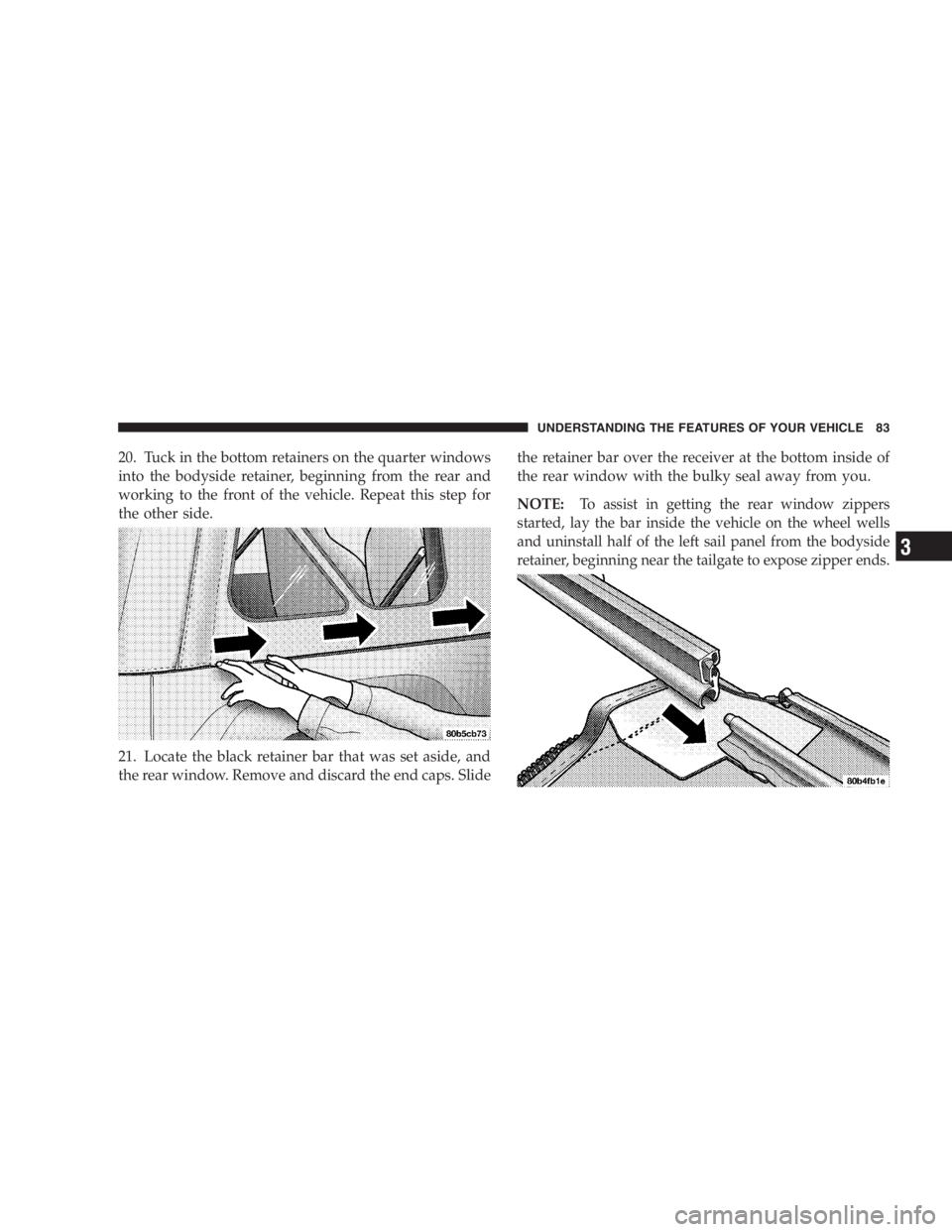
Unintended movement of a vehicle could injure
those in and near the vehicle. As with all vehicles,
you should never exit a vehicle while the engine is
running. Before exiting a vehicle, you should always
shift the vehicle into P (Park), remove the key from
the ignition, and apply the parking brake. Once the
key is removed from the ignition, the transmission
shift lever is locked in the P (Park) position, securing
the vehicle against unwanted movement. Further-
more, you should never leave children unattended
inside a vehicle.
Page 91 of 1056
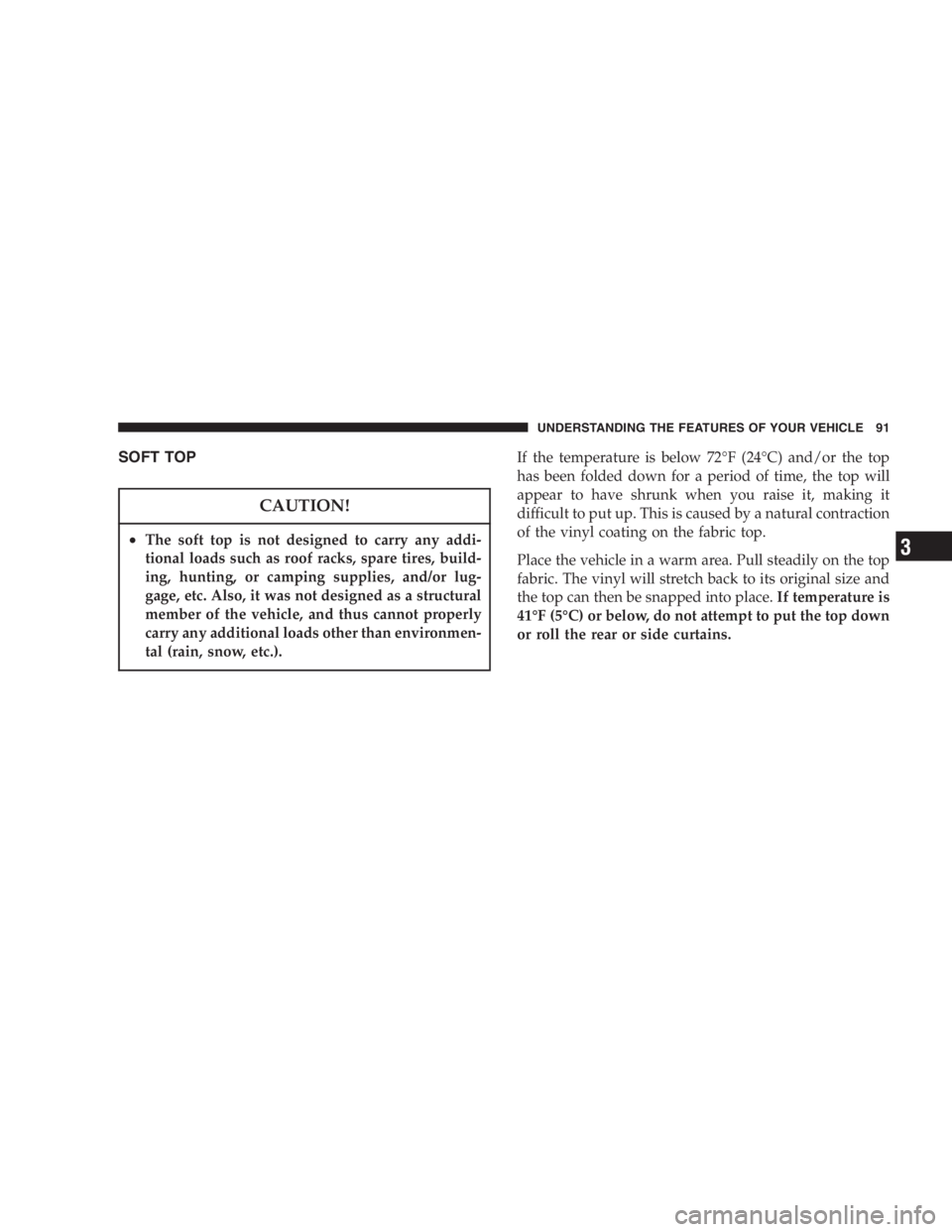
Failure to engage a position completely can cause
transfer case damage or loss of power and vehicle
control. You could have an injury accident. Do not
drive the vehicle unless the transfer case is fully
engaged.
On vehicles equipped with a limited-slip differen-
tial, never run the engine with one rear wheel off the
ground. The vehicle may drive through the rear
wheel remaining on the ground and cause you to
lose control of your vehicle.
Page 96 of 1056
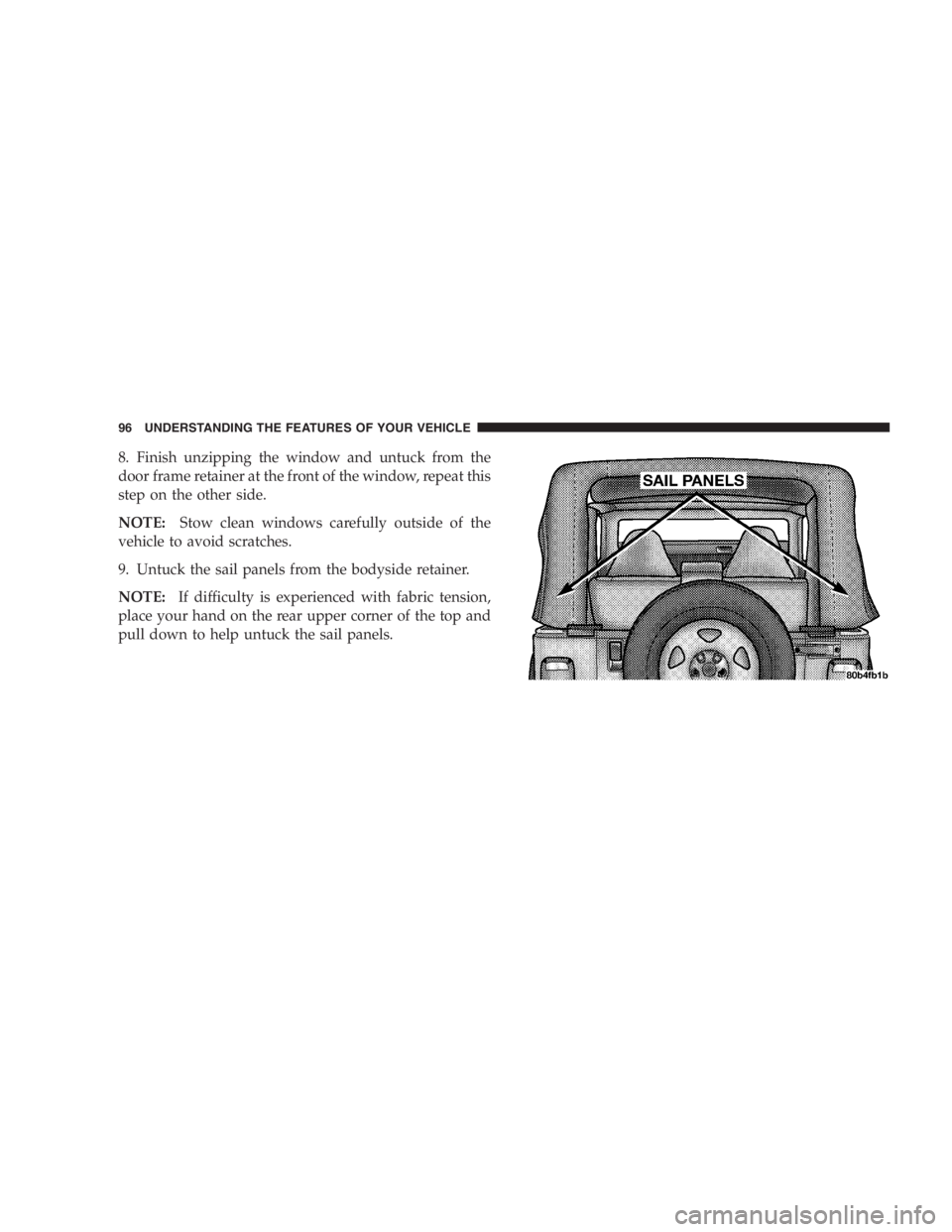
To use your brakes and decelerate more safely, follow these tips:
•Do not “ride” the brakes by resting your foot on the pedal. This
could overheat the brakes and result in unpredictable braking
action, longer stopping distances, or brake damage.
•When descending mountains or hills, repeated braking can cause
brake fade with loss of braking control. Avoid repeated heavy
braking by downshifting the transmission whenever possible.
•Do not downshift on icy or slippery roads, because engine braking
may cause skidding and loss of control.
•Engines may idle at higher speeds during warm-up, which could
cause rear wheels to spin and result in loss of vehicle control. Be
especially careful while driving on slippery roads, in close-quarter
maneuvering, parking or stopping. Remember, always engage
4-wheel drive when driving on slippery roads.
•Do not drive too fast for road conditions, especially when roads are wet
or slushy. A wedge of water can build up between the tire tread and the
road. This hydroplaning action can cause loss of traction, braking
ability, and control. Under such conditions, engage 4-wheel drive.
•After going through deep water or a car wash, brakes may become
wet, resulting in poor performance and unpredictable braking
action. Dry the brakes by gentle, intermittent pedal action while
driving at very slow speeds.
WARNING!
The weight and position of cargo and passengers can change
the vehicle center of gravity and vehicle handling. To avoid
loss of control resulting in personal injury, follow these
guidelines:
•Always place cargo evenly on the cargo floor, and locate
heavier objects as low and as far forward as possible.
•Place as much cargo as possible in front of the rear axle. Too
much weight or improperly placed weight over or behind
the rear axle can cause the rear of the vehicle to sway.
•Do not pile luggage or cargo higher than the top of the
seatback. This could impair visibility or become a danger-
ous projectile in a sudden stop or collision.
•The rear cargo space is intended for load carrying purposes
only, not for passengers, who should sit in seats and use
seat belts.
•On hardtop models, do not drive with the lift glass up. On
fabric top models, do not drive with the rear window
curtain up unless the side curtains are also open. This will
prevent dangerous exhaust fumes from entering the ve-
hicle.
Page 97 of 1056
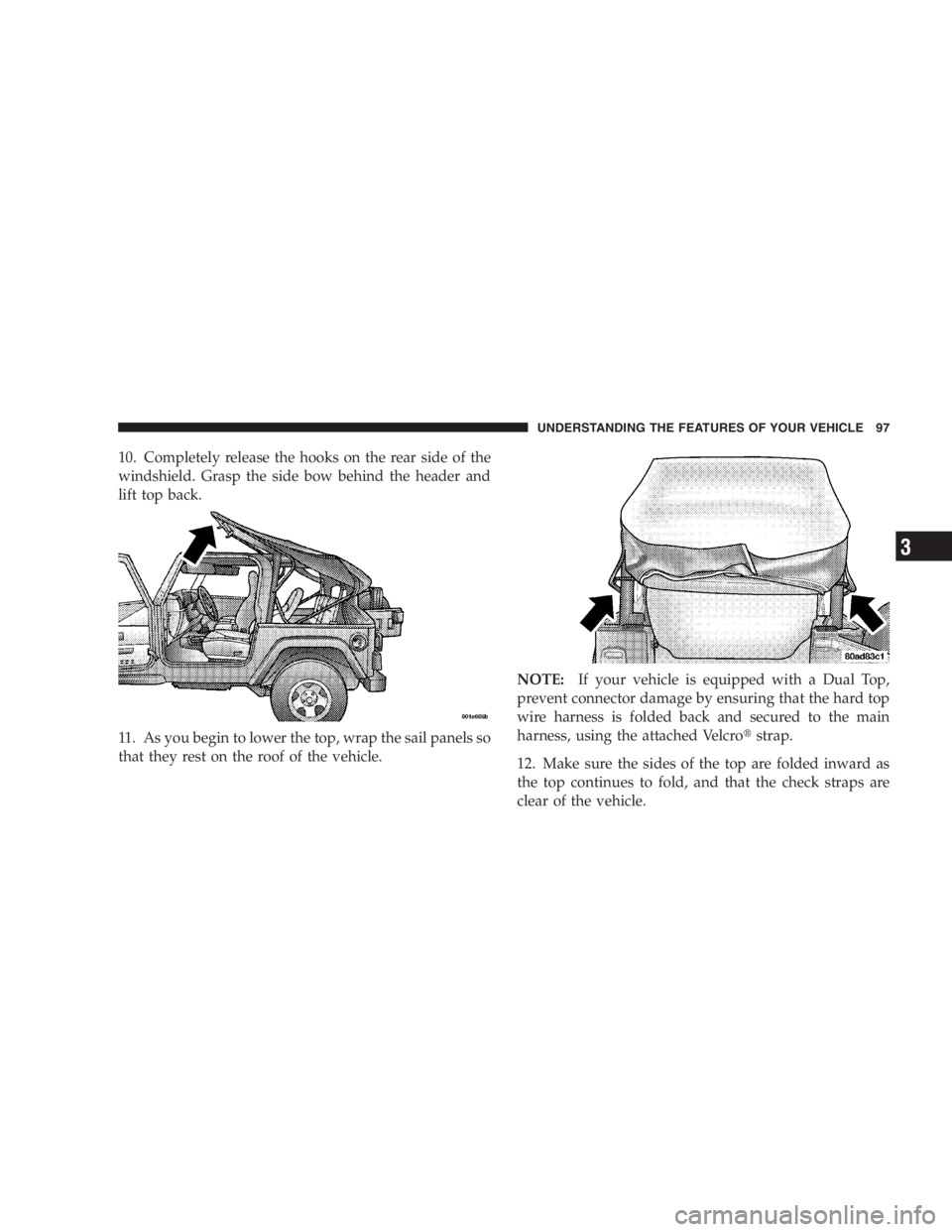
To help avoid personal injury, follow these tips:
•Never reach through the steering wheel to operate
steering column controls. Injury to your hands or
loss of vehicle control may result.
•If the engine stalls or power assist fails due to a
malfunction, vehicle steering and braking will
require greater effort.Significant over or under-inflation of tires, or mixing
sizes of tires or wheels on the vehicle can lead to loss
of braking effectiveness.
Page 102 of 1056
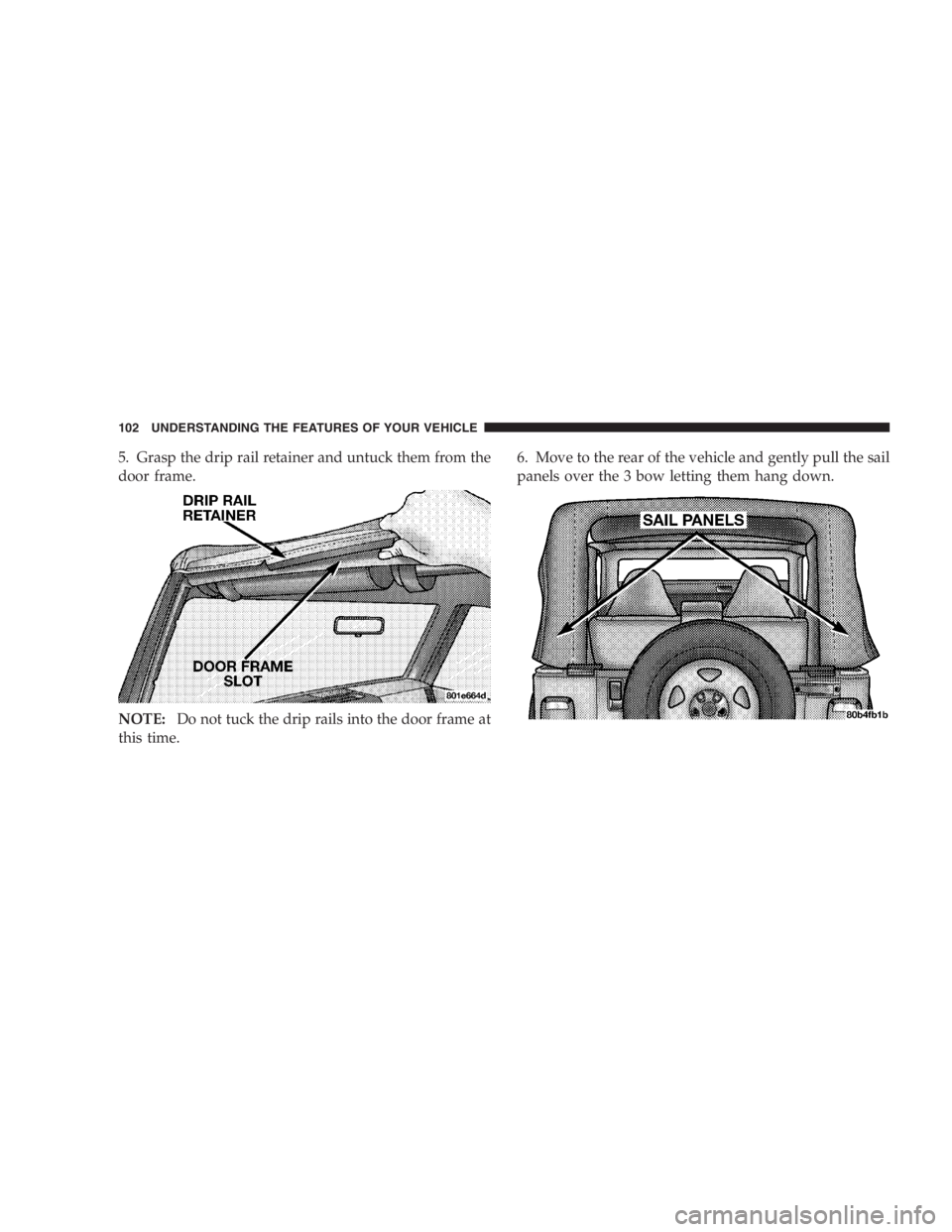
If the engine stalls or you lose headway or cannot
make it to the top of a steep hill or grade, never
attempt to turn around. To do so may result in
tipping and rolling the vehicle. Always back care-
fully straight down a hill in R (Reverse) gear. Never
back down a hill in N (Neutral) using only the brake.
Remember, never drive diagonally across a hill-always
drive straight up or down.
If the wheels start to slip as you approach the crest of a
hill, ease off the accelerator and maintain headway byturning the front wheels slowly left and right. This may
provide a fresh “bite” into the surface and will usually
provide traction to complete the climb.
Traction Downhill
Shift the transmission into a low gear and the transfer
case to 4L (Low) range. Let the vehicle go slowly down
the hill with all four wheels turning against engine
compression drag. This will permit you to control the
vehicle speed and direction.
When descending mountains or hills, repeated braking
can cause brake fade with loss of braking control. Avoid
repeated heavy braking by downshifting the transmis-
sion whenever possible.
STARTING AND OPERATING 205